#autonomous territory
Explore tagged Tumblr posts
Text

Kuummiut, Greenland: Kuummiit is a settlement in the Sermersooq municipality in southeastern Greenland. Founded in 1915, it had 248 inhabitants in 2020. The settlement is located on the eastern shore of the Ammassalik Fjord, approximately 40 km to the northeast of Tasiilaq and 34 km to the north of Kulusuk. The settlement is served by the Kuummiit Heliport (IATA: KUZ, ICAO: BGKM). Wikipedia
#Kuummiut#Sermersooq municipality#autonomous territory#Greenland#Kingdom of Denmark#North American island#north america#north america continent
155 notes
·
View notes
Text
Greenland is Still Part of Denmark
Remember that Greenland is still an autonomous territory of the Kingdom of Denmark (Kongeriget Danmark). Even so, Greenland has been self-governing since 1979, they have their own government and parliament, and in 2009 further autonomy was granted to Greenland.

Originally a colony of Norway, Greenland has been part of Denmark since Denmark was still in a personal union with Norway, known as Denmark-Norway. When the union dissolved in 1814, Greenland, along with Faroe Islands, was transferred to Denmark. Greenland has been an integral part of Denmark officially since 1953.
Since Denmark is part of European Union (EU), Greenland is also part of EU but not directly because they withdrew in 1985, it is associated with EU through OCT (overseas country and territory) status. Greenlanders are Danish citizens and also EU citizens.
Even though it is on the North American continent, Greenland has been part of Europe politically and culturally for more than a millennium since the Norse people from Iceland settled it in 986. Once abandoned for unknown reasons in 14th-15th century, it was rediscovered in 1721.
The potential for independence for Greenland has always existed and I am supporting this. However there needs to be an amendment to the Constitution of Denmark because Greenland is a subject of it. Hopefully this will happen in the best way possible, opening a new chapter in history, particularly for Greenland and Denmark.
🇬🇱🤝🏼🇩🇰
#greenland#kalaallitnunaat#kalaallit nunaat#denmark#copenhagen#danish realm#europe#european#european union#eu#denmark norway#greenlandic history#greenland history#danish history#denmark history#for greenland#for denmark#greenland independence#greenland is not for sale#independence#sovereignty#home rule#autonomous territory#history#politics#political#this is political#north america#north american#read this
9 notes
·
View notes
Text
really do not think people understand the extent to which palestinian sites/landmarks (especially muslim ones) were destroyed, beginning in 1948 until now, even in cities. the oldest extant mosque in jaffa (al-bahr mosque) was built in 1675, even though islam came there in the 7th century
#not to mention that many mosques that /were/ restored but are in 'jewish areas' r heavily guarded & prayer is hardly if ever allowed#to anyone thinking ''you can say the same thing abt jewish sites in mena countries''. you can't have one repaired w/o the other#and ultimately the root of the problem is both the colonization of palestine + antisemitism. advocating for palestine + against#antisemitism are far from mutually exclusive#(and for the love of god please stop using mena jews as a political gotcha i swear to god#and it's not like a regime that forced everyone to integrate into the ''new jewish'' culture is any less genocidal)#as someone who comes from one of the jewish groups who was affected by that to arguably one of the highest degrees & who's also a staunch#antizionist even i know that. politics re: cultural site preservation are stupid but that doesn't make it any less stomach-wrenching#it really is just Luck. al-bahr mosque just so Happens to be in a ''mixed city'' so destroying it'd be a ''bad look''#the tomb of nahum just so Happens to be in an autonomous kurdish territory so restoring it isnt as big a deal#and then people have the gall to wonder how i could ever ever ever sympathize with those ''savage arabs''. seriously??#btw im muting notificaions on this post so if you have a problem with me just dm me or block me whatever idc
797 notes
·
View notes
Text
I need to hit him with a rock why is he trying to buy greenland AGAIN it's not for sale you can't just buy another fucking country why is he so fucking STUPIDD
#I hate him your honor!!!!!!#why does he have an INFATUATION with buying greenland! what's there to WANT for ''reasons of national security'' just leave them ALONE dude#current events#FUCK i don't WANT to have to go through four MORE YEARS of this BULLSHITTT#'oh it's a Danish territory-' THEY'RE AUTONOMOUS THEY HAVE THEIR OWN PRIME MINISTER THERE'S PEOPLE WHO LIVE THERE STOP TRYING TO BUY GREENL
5 notes
·
View notes
Text
There are people who really do think that capitalism invented a class who owns everything.
What do you people think came BEFORE?
#the anarcho-syndalist autonomous collective in Monty Python and the Holy Grail was a joke#you... do you realize that?#feudalism was everyone owning everything in common and wars over territory didn't happen I guess#when do these people think slavery was invented?
2 notes
·
View notes
Text
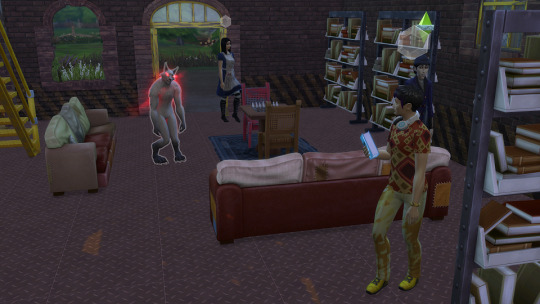
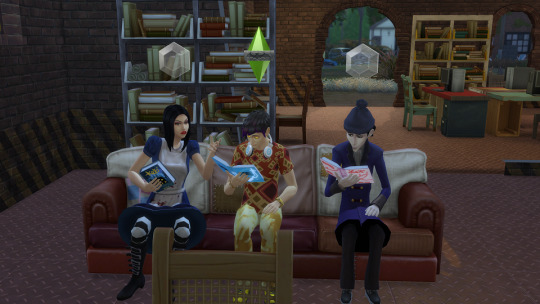
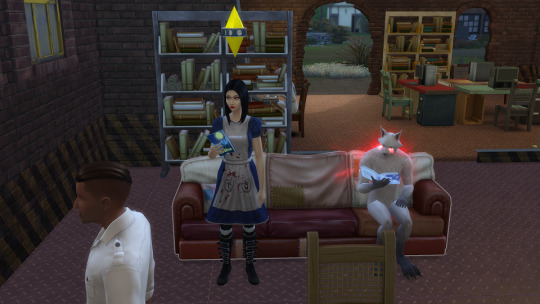

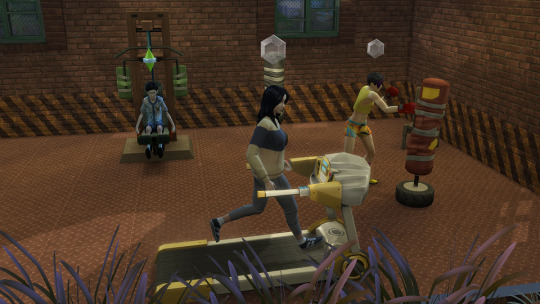
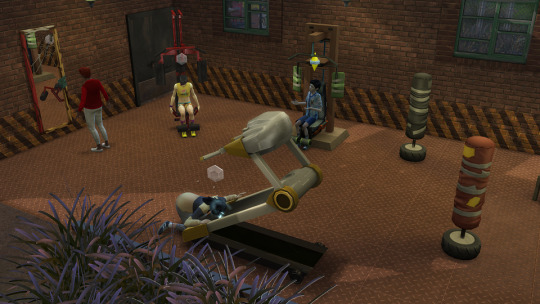

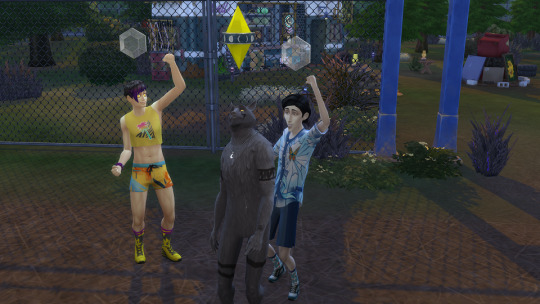
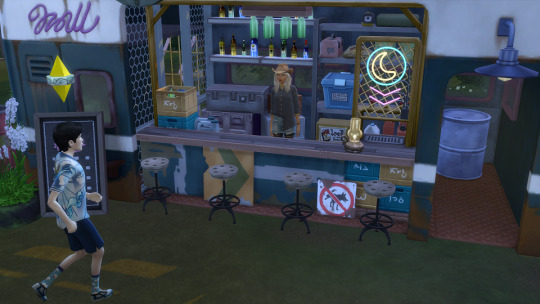
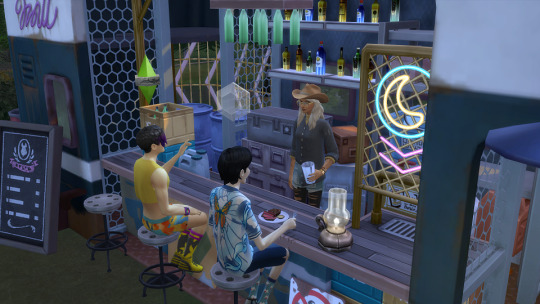
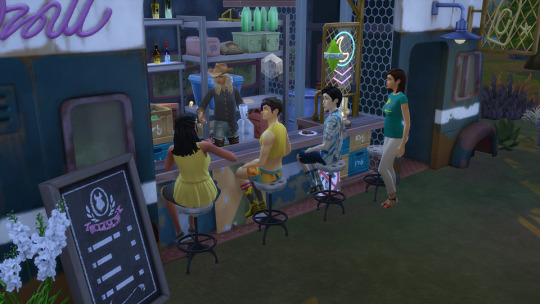
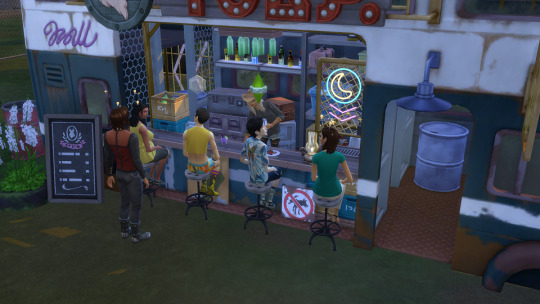
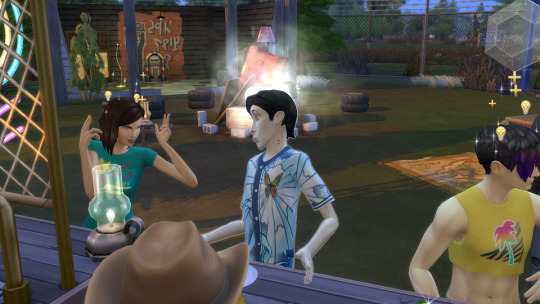
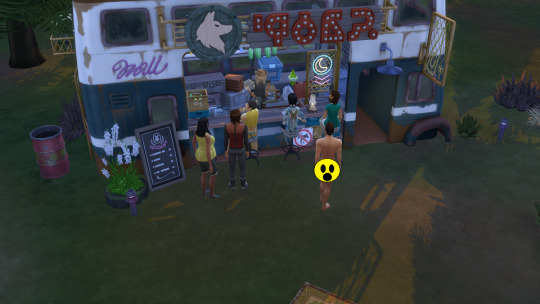
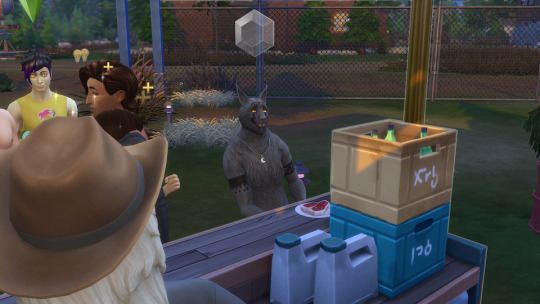
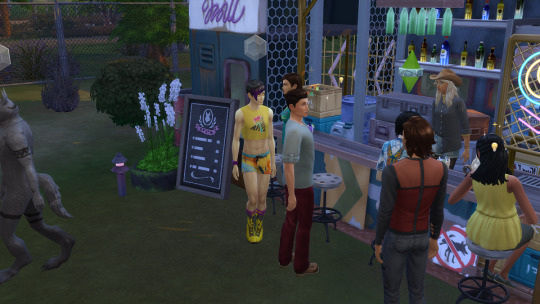
-->To Moonwood Mill! Yeah, I was thinking that I hadn’t been there for a while, and it might be nice to go and visit again and let Alice work on some werewolf stuff. :) They of course started their grand day out at the local library/gym, where they all grabbed a nice werewolf-related book to read for starters (and Coty got a little weak at the knees looking at Smiler. XD Apparently that high reputation is making them VERY attractive!). Having fulfilled THAT want, Victor then got sent out to the observatory to look at the sky for a little while; Smiler hopped on the computer to play games; and Alice –
-->Well, Alice just couldn’t seem to decide on what she wanted to read, as she kept grabbing new books, getting a few pages in, then putting them away and getting more. XD I’ve had days like that, girl. I managed to stop the vicious cycle and instead had her, Smiler, and Victor hit the gym for a while for a little working out – after all, Alice enjoys keeping fit, and it was a good opportunity to work on that skill too! She ran on the treadmill (taking a little spill when she tried to start a hill challenge a bit too soon) while Smiler did some boxing and some lifting, and Victor struggled his way through a session on the weight machine. I did my best to boost them up by adding the “Bracing Breezes” lot trait to the place (along with “Peace & Quiet” and “Study Spot” to reflect the fact that, well, it IS primarily a library), but I don't know how much difference it made this particular session. Victor and Smiler eventually got tired and wandered off to do other things – I let Victor rest with a good book while Smiler got put on “filling the local pet bowls” duty – and eventually I stopped Alice’s run as I could see she was getting hungry. The problem was, I could also see Victor was getting hungry – and while Alice could easily transform and hunt for food, Victor was kind of dependent on getting something someone had COOKED. I thus started looking around for a barbecue or something in the immediate area –
-->And then looked at the bar just across the street, went “you know what, those serve food”, and had them swap lots right after Alice had swapped into her beast form! *thumbs up* I sent her out to hunt while Victor and Smiler hit the bar (and I hit the lot traits in Build/Buy to add “Great Acoustics,” “Convivial,” and “Party Place” to give it the right vibes). Victor ended up ordering a Blue Steak and a Wrench, while Smiler got their typical Plasma Jane, and they ended up chatting with the other two Sims hanging out at the bar – Akshara and Camille. Everyone was having a very good time –
-->And then Camille pressed her fingers against her forehead and Victor ended up getting brain-zapped! Guess who is an alien in disguise! O.O And guess who did that autonomous “memory-erasing” thing I hate so much. >( Fortunately all it did was make Victor forget the little relationship he’d built up with her – if she’d affected Victor’s memories of his actual partners, I might have just killed her.
-->And then, right before Alice returned from her hunt, a completely naked J. Huntington III showed up. For no reason. And when I say “completely naked,” I mean that – he didn’t even have the censor on for some reason! I’m not sure what disabled it, but there was a lot of naked man-butt in front of the bar. The local Sims were appropriately “what the everloving fuck, dude.” XD Even Alice, who was a little distracted by the scent of freshly-"found" steak when she first arrived, found herself shocked by all the naked flesh on display after she'd eaten. Fortunately, Smiler managed to introduce themselves after a little confusion and get him to put on some cold-weather clothing. *shakehead* Sims, man. Dunno what to tell you.
#sims 4#the lazy save#victor van dort#alice liddell#smiler always#I don't do as much with Alice as a werewolf as I thought I might#the problem is I don't want to play her as a werewolf who wrecks all the shit#and that can make it difficult to actually earn XP and level up#plus at least a few of the powers are also dedicated to wrecking all the shit sooo#at least the ability to lick herself clean sleep on the ground whenever she wants and mark her territory are all good#and the super speed is amazing when it's not being glitchy and/or pissing me off#but yeah trying to get a little more werewolf stuff in here!#did not expect to see ALIEN stuff but that is the wonder of Sims#or the horror#I really hate that stupid relationship-erasing power#THAT SHOULD NOT BE AUTONOMOUS#and yes naked man that I had to censor myself as the game didn't do it for me#*squints suspiciously at Wonderful Whims*#did you get some code from your kinkier sibling in a recent update?#or maybe my game is just being weird#any they got some clothes on him eventually so all's good#queued
1 note
·
View note
Text
the thing about latinoamérica is that it's the most beautiful wonderful place on earth. there's a spinal cord of mountains running through, and at their feet you have everything from deserts to forests to jungles to glaciers. the lungs of the world are here, and so are the eyes into the sky. there are animals like axolotls and vicuñas and llamas and condors and jaguars. and the people are the most clever, the most resilient people in the world. you have cultures that are thousands of years old that have been resisting colonization for hundreds of years and in several cases successfully fighting back and even gaining territory. you have people who have lost their loved ones decades and decades ago who are still fighting for justice. you have a rich history of solidarity and struggle and you can sit with people in a circle passing a mate around and they will tell you of all the times they put everything on the line for a better world. there is an entire island that inspired revolutions around the world and that has been resisting a blockade for 60 years. there are communities building autonomous, revolutionary structures right now. and really it's not a surprise that there's so much grit and strength here because it would be inconceivable to be born and to live in this beautiful place without fighting for it.
#regular normal thoughts on my morning jog#when left alone for >30 minutes i always end up waxing poetic about nuestra america like this btw sometimes i am not even alone when i do it#anyway. when che said el revolucionario verdadero está guiado por grandes sentimientos de amor he waa being so real and he meant this#personal.txt
5K notes
·
View notes
Text
Honestly quite insane that Germany and France have had to issue warnings over this.
930 notes
·
View notes
Text

Black History Icons | The Kru People
African Tribe That Refused to Be Captured into Enslavement...Kru People.
The Kru people are an African tribe of coastal southeastern Liberia and neighboring Cote d’Ivoire (Ivory Coast). The tribe is known for sailing. Many of the Kru people also migrated to neighboring areas such as Sierra Leone to look for work as fishermen and dockworkers. The Kru along with the Grebo resisted Maryland settlers’ efforts to control their trade. They were also infamous amongst early European enslavers as being especially opposed to capture.
There were about 24 subgroups with dialectal and cultural differences. Their political organization was traditionally un-centralized, each subgroup inhabiting a number of autonomous towns. It was believed that the Kru people were viewed as less valuable during the Transatlantic slave trafficking because they would not allow themselves to be captured by Europeans they would often take their own lives first, or fight viciously to avoid being taken away.
The Kru people engaged in migrant labor, seafaring, and migrant working. They settled as far east as Cameroon and west as Freetown and Cape Verde. They had exceptional canoeing skills in treacherous surf waters and were well-known for it by the 1700s when they served on British merchant and warships. Although the natives were in many respects similar in type and tribe, every village was an independent state; there was also very little intercommunication.
The tribe is one of the many ethnic groups in Liberia, they comprise about 7 percent of the population. It is also one of the main languages spoken. By the late 20th century there were probably more Kru outside tribal territory than within. The largest single Kru community in the late 20th century was in Monrovia. Notable ethnic Krus include former soccer star George Weah and Christian Evangelist Samuel Morris who was originally known as Kaboo. Liberian President Ellen Johnson Sirleaf is of mixed Kru, Gola, and German ancestry
#black history#blacklivesmatter#black lives matter#africa#african tribe#kru people#african history#liberia#black people#black liberation#black power
510 notes
·
View notes
Text



Death Type: Cowplant
💼 Supervising Entity: Netherworld Department of Death
✨ Subdepartment: Arcane Affairs Bureau 👽 Special Division: Xenoarchane Task Force » Someone’s got to manage extraterrestrial encounters, right? «

💀 Reaper: Carla
⤷ Role: Ethereal Envoy ⤷ Alignment: Benevolent ⤷ Territory: Strangerville

⏳ Decedent: Erwin Pries

☠️ Death Trigger: 「 🎬 」 Feed a hungry Cowplant while uncomfortable after its first lure ➥ Pack required: Base Game 👻Ghost Quirks: ✦ Decay plants when in a bad mood ✦ Tends to plants autonomously
More Death Types [ x ]

💀 Carla » Normally, reapers are born from death itself. But in times of worker shortage, we take what we can get — like Carla, who got herself eaten by a Cowplant and somehow landed a job instead of staying digested. In hindsight, a mistake. She’s utterly unprofessional, spends more time fawning over Cowplants than actually working, and, to top it off, seems infatuated with the first soul she was meant to reap. « — Mr. Mortis » Now, now, no need to be so grim! Carla’s a delight! So what if she’s a little… enthusiastic? « — Donna ✦ Genetics ⊱ Hair + Bangs • Eyes • Skin • 💀 1 + 2 • "Vines" • Tattoo ✦ Clothes ⊱ Dress • Jacket* • Shoes ✦ Accessories ⊱ Hat* • Earrings • 🎧 • Glowing Hands
+* Clipping

⏳ Erwin Pries ⊱ Hair • Hat • Glasses • Outfit* • Sneaker
* Strangerville

C R E A T O R S
Carla @daylifesims @strangegrapefruit @bluerose-sims @nell-le @belaloallure3 @agena87
Erwin @okruee @mosneakers @casteru
310 notes
·
View notes
Text
AMAZING article about what it means to participate in anti-Zionism work both online and in person.
If your anti-zionism does not in any way acknowledge that it is a way of thought and practice led by and for Palestinians, then you need to reevaluate your "anti-zionism" label.
Some passages that felt especially relevant to tumblr:
If we accept, as those with even the most rudimentary understanding of history do, that zionism is an ongoing process of settler-colonialism, then the undoing of zionism requires anti-zionism, which should be understood as a process of decolonisation. Anti-zionism as a decolonial ideology then becomes rightly situated as an indigenous liberation movement. The resulting implication is two-fold. First, decolonial organising requires that we extract ourselves from the limitations of existing structures of power and knowledge and imagine a new, just world. Second, this understanding clarifies that the caretakers of anti-zionist thought are indigenous communities resisting colonial erasure, and it is from this analysis that the strategies, modes, and goals of decolonial praxis should flow. In simpler terms: Palestinians committed to decolonisation, not Western-based NGOs, are the primary authors of anti-zionist thought. We write this as a Palestinian and a Palestinian-American who live and work in Palestine, and have seen the impact of so-called ‘Western values’ and how the centring of the ‘human rights’ paradigm disrupts real decolonial efforts in Palestine and abroad. This is carried out in favour of maintaining the status quo and gaining proximity to power, using our slogans emptied of Palestinian historical analysis.
Anti-zionist organising is not a new notion, but until now the use of the term in organising circles has been mired with misunderstandings, vague definitions, or minimised outright. Some have incorrectly described anti-zionism as amounting to activities or thought limited to critiques of the present Israeli government – this is a dangerous misrepresentation. Understanding anti-zionism as decolonisation requires the articulation of a political movement with material, articulated goals: the restitution of ancestral territories and upholding the inviolable principle of indigenous repatriation and through the right of return, coupled with the deconstruction of zionist structures and the reconstitution of governing frameworks that are conceived, directed, and implemented by Palestinians. Anti-zionism illuminates the necessity to return power to the indigenous community and the need for frameworks of justice and accountability for the settler communities that have waged a bloody, unrelenting hundred-year war on the people of Palestine. It means that anti-zionism is much more than a slogan.
[...]
While our collective imaginations have not fully articulated what a liberated and decolonised Palestine looks like, the rough contours have been laid out repeatedly. Ask any Palestinian refugee displaced from Haifa, the lands of Sheikh Muwannis, or Deir Yassin – they will tell that a decolonised Palestine is, at a minimum, the right of Palestinians’ return to an autonomous political unit from the river to the sea. When self-proclaimed ‘anti-zionists’ use rhetoric like ‘Israel-Palestine’ – or worse, ‘Palestine-Israel’ – we wonder: where do you think ‘Israel’ exists? On which land does it lay, if not Palestine? This is nothing more than an attempt to legitimise a colonial state; the name you are looking for is Palestine – no hyphen required. At a minimum, anti-zionist formations should cut out language that forces upon Palestinians and non-Palestinian allies the violence of colonial theft.
[...]
The common choice to centre the Oslo Accords, international humanitarian law, and the human rights paradigm over socio-historical Palestinian realities not only limits our analysis and political interventions; it restricts our imagination of what kind of future Palestinians deserve, sidelining questions of decolonization to convince us that it is the new, bad settlers in the West Bank who are the source of violence. Legitimate settlers, who reside within the bounds of Palestinian geographies stolen in 1948 like Tel Aviv and West Jerusalem, are different within this narrative. Like Breaking the Silence, they can be enlightened by learning the error of colonial violence carried out in service of the bad settlers. They can supposedly even be our solidarity partners – all without having to sacrifice a crumb of colonial privilege or denounce pre-1967 zionist violence in any of its cruel manifestations. As a result of this course of thought, solidarity organisations often showcase particular Israelis – those who renounce state violence in service of the bad settlers and their ongoing colonisation of the West Bank – in roles as professionals and peacemakers, positioning them on an equal intellectual, moral, or class footing with Palestinians. There is no recognition of the inherent imbalance of power between these Israelis and the Palestinians they purport to be in solidarity with – stripping away their settler status. The settler is taken out of the historical-political context which afforded them privileged status on stolen land, and is given the power to delineate the Palestinian experience. This is part of the historical occlusion of the zionist narrative, overlooking the context of settler-colonialism to read the settler as an individual, and omitting their class status as a settler.
It is essential to note that Palestinians have never rejected Jewish indigeneity in Palestine. However, the liberation movement has differentiated between zionist settlers and Jewish natives. Palestinians have established a clear and rational framework for this distinction, like in the Thawabet, the National Charter of Palestine from 1968. Article 6 states, ‘The Jews who had normally resided in Palestine until the beginning of the Zionist invasion will be considered Palestinians.’ When individuals misread ‘decolonisation’ as ‘the mass killing or expulsion of Jews,’ it is often a reflection of their own entanglement in colonialism or a result of zionist propaganda. Perpetuating this rhetoric is a deliberate misinterpretation of Palestinian thought, which has maintained this position over a century of indigenous organising. Even after 100 years of enduring ethnic cleansing, whole communities bombed and entire family lines erased, Palestinians have never, as a collective, called for the mass killing of Jews or Israelis. Anti-zionism cannot shy away from employing the historical-political definitions of ‘settler’ and ‘indigenous’ in their discourse to confront ahistorical readings of Palestinian decolonial thought and zionist propaganda.
[...]
In the context of the United States, the most threatening zionist institutions are the entrenched political parties which function to maintain the status quo of the American empire, not Hillel groups on university campuses or even Christian zionist churches. While the Anti-Defamation League (ADL) and the American Israel Public Affairs Committee (AIPAC) engage in forms of violence that suppress Palestinian liberation and must not be minimised, it is crucial to recognise that the most consequential institutions in the context of settler-colonialism are not exclusively Jewish in their orientation or representation: the Republican and Democratic Party in the United States do arguably more to manufacture public consent for the slaughtering of Palestinians than the ADL and AIPAC combined. Even the Progressive Caucus and the majority of ‘The Squad’ are guilty of this.
Leila Shomali and Lara Kilani
2K notes
·
View notes
Text

Kullorsuaq, Greenland: Kullorsuaq is a settlement in the Avannaata municipality in northwestern Greenland. It is the northernmost settlement in the Upernavik Archipelago, located on Kullorsuaq Island at the southern end of Melville Bay, itself part of the larger Baffin Bay. Wikipedia
#Kullorsuaq#Avannaata municipality#Upernavik Archipelago#Kullorsuaq Island#Melville Bay#Baffin Bay#North American island autonomous territory#Kingdom of Denmark#north america#north america continent
245 notes
·
View notes
Text
They're already blaming the wildfires on jews
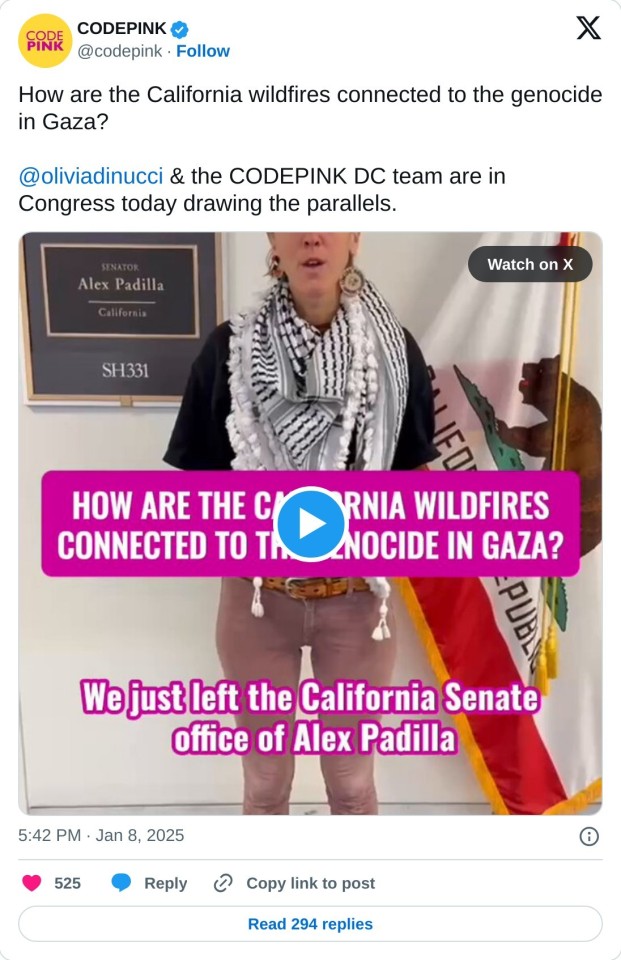
The fact that they're saying that bombs are causing the wildfires and will continue to cause climate change by saying that the US is funding climate collapse.
And I do agree with part of what she said, climate reparations do need to be paid to indigenous communities. But to paint Israel as causing all these serious climate events is ridiculous.
This is going to be long as I do the math and show my maths but I show my maths to prove I'm not pulling numbers out of my arsehole.
The war hasn't produced enough emissions to be a main cause of climate change.
The only figures we have are for the first 120 days of the war. 450,000 tonnes of greenhouse gasses were released. This include emissions from both Israel and Hamas, using both military operations and infrastructure to come to thay conclusion.
Assuming it stays at the same level 1,350,000 or 1 million and 350 thousand tonnes for those who prefer bigger numbers written.
According to the World Meteorological Organization, total emissions projected at the end of 2024 per data published November 2024 was 41.6 billion tonnes. This is a compounded figure so to find out emissions released in 2024 alone, we'd need to subtract 2023 compounded figure (37.4b) from 2024 estimated compounded figure. This is figure is 4.2 billion.
So to take the figure of the war emissions estimate for 1 year and find out the percentage of total emissions 2024, it makes up 0.03% of total emissions.
No 2024 breakdown for each country has been publish so by using 2023 figures and assuming the percentages are similar to 2024, here are some but very much not all, of the countries which had higher emissions than the war for 1 year
Chad, Maldives, Togo, niger, Madagascar, Haiti, Congo, Iceland, Mauritius, Namibia, Albania, Papa New Guinea, New Caledonia, Afghanistan, Nicaragua, Burkina Faso, Jamaica, Armenia, Cyprus, Uganda, etc.
153 countries/autonomous territories had more emissions than the war in the span of a year.
And it honestly is more. The percentages only go as low as 0.01% before it taps out and puts then at zero.
160 countries if we go by tonnes, released more emissions than the war in the span of a year.
So even if all the emissions were from Israel with the war emissions, it still isn't a lot.
If we talk about the increase, so how much the emissions affected total emission increase. The best figure is also from the world metrological organization is 0.4 billion aka 400 million tones.
The war emissions was literally 0.33% of the total increase. 398,650,000 emissions were still released more than last year excluding the wars contribution.
There is no ecocide done by Israel.
And I also find it insulting that she compares the LA wildfires to Gaza and says they're going through the same thing.
Do not get me wrong, my heart does go out to all of those affected by the fire.
But you're telling me, that (per figures earlier today) 7 people killed and 10,000 structures (including cars) damaged is the same as the destruction and lives lost in Gaza.
You have to be joking.
I've said it before and I'll say it again. Whilst I support Israel existing and it does have a right to defend itself, the Israeli government has gone too far.
I've also said it before but I'll say it again - two things can both be horrendously bad and still have quantifiable measures of which was more destructive and caused more harm.
The LA fires are bad and what's happening in Gaza is also bad. Both are bad and deserve attention.
But to act like the damages caused by the fire is the same as Gaza??????? Absolutely cooked behavior please get off the internet forever.
279 notes
·
View notes
Text
LONDON -- President Donald Trump said the U.S. will "go as far as we have to go" to get control of Greenland, ahead of a planned visit to the Arctic island by Vice President JD Vance that has prompted criticism from Greenland and Denmark.
Vance, second lady Usha Vance and Energy Secretary Chris Wright will lead the U.S. delegation to visit the Pituffik military space base in the northwest of the island, having scaled back plans for a broader and longer visit. The American group was originally planning to visit the Greenlandic capital, Nuuk, and a dog sled race.
Trump showed no indication of softening his ambition to take control of the island, which is an autonomous territory but part of the Kingdom of Denmark.
"We need Greenland for national security and international security," Trump said, taking reporters' questions in the Oval Office.
155 notes
·
View notes
Text
The inevitable downfall of the violent, dictatorial, neoliberal government of Assad is itself a moment worthy of celebration; yet the future of Syria is now up in the air. The hopes of the Syrian people now depend on the answers to many questions that we cannot conclusively predict right now. These unknowns include:
How will HTS function as a national government? Has their signaling towards a more moderate strand of Islamism in recent years been sincere, or was it just a show to allow them to function as the center of power in a rebel movement ranging from jihadists to secular socialists? Are they either motivated to or capable of making good on their promises of reconstruction and national institution-building out of the ashes of what now constitutes Syrian politics? Will they be a theocratic monolith like the House of Saud, a weak pluralist semi-democracy like Lebanon, a diverse semi-autocracy like Turkey, something more reminiscent of Assad’s secular nationalism, something else entirely?
Will HTS be able to establish unified control of the security situation? There is currently a lack of centralized authority, a rapid formation of new organized criminal syndicates trying to either loot or establish control over slivers of territory, and dozens of ideologically-motivated armed rebel groups with only loose loyalties to the HTS government. The Taliban government in Afghanistan is still fighting Islamic State rebels for full territorial control to this day. How long will this fighting last in Syria, and what forms will it take?
If HTS can establish control, will they be willing to be restrained in their monopoly on violence, or will they attempt to rule purely by force? This can often be a make-or-break moment for the evolution of new post-war governments.
How will the interventionist powers with a vested interest in Syria react? Russia owns a naval base and just lost an ally; the US owns a chunk of Syrian territory; Israel is already making offensive moves; Turkey is now the closest ally and sponsor of the new government; and Iran has its own proxy forces in the conflict (not to mention supply lines to other proxies in the Middle East). Is Turkey getting its first puppet state in the region (besides Northern Cyprus)? Will the new Syria be pressed in from all sides? Is it even possible for an independent Syria to emerge from this?
How aggressively will Israel pursue control over the Golan Heights? What has long been a frozen conflict is already turning hot now that Israel's sending troops in to expand its effective lines of control and double down on its (illegitimate, illegal) occupation of the area. What does HTS do in response, and more generally, how do they deal with the fact that they're now neighbors with Israel?
There are already some early signs of refugee inflows returning from the diaspora-- how widespread will this be, how quick will it be, and how it we be distributed geographically? Will states with large refugee populations pressure them into returning? There are perhaps 10-15 million Syrian people living abroad, with more than five million just in the countries immediately surrounding the nation- what happens to all of them?
Will the Kurds be allowed to participate in the post-war political process? This might seem to imply some form of formal break with the PKK in order to appease Turkey enough to participate in the official deliberations on Syria’s future. I'd be interested to hear what kind of arrangement they might pursue- maybe some form of autonomous zone comparable to that of Iraqi Kurdistan?
Will there be retaliatory violence against the Alawite minority who were favored by Assad’s dictatorship? Against any of the other ethno-religious minorities who faced violence by virtually every side of this conflict? Wars of this intensity do not vanish overnight, especially in a nation like Syria which is fractured along ethnic, religious, and political lines. HTS has made a point of noting that they believe in protecting minorities in Syria, but the test will be in how they now treat Kurds, Yazidis, Alawites, Druze, etc., etc.
355 notes
·
View notes
Note
Moral mustve been seriously low in the SAA for this to have happened they kept retreating left and right without trying to dig in and put up a fight. Was it desertions? Officers acting autonomously breaking the chain of command? Why did assad's plane take off fly towards homs and then turn back around before crashing? Was it shot down? Was he even on board? Its crazy how rapid the whole thing went down. What do you anticipate happening next?
the FSA and other Syrian opposition groups are suffering from factionalist infighting, with ideologies ranging from Salafist fundamentalism to Secular democratic movements. With Assad gone, there will be a power vacuum left in which various factions of the Syrian opposition will strive to control. It either boils down to compromise between the more conservative elements and the more liberal secularists or a full take-over of Salafi takfirism, which is of no benefit to religious or secular minorities.
The Turkish-backed rebels, or the Syrian National Army, is a coalition of several anti-assad militias, all of whom share their respective ideologies and being concentrated in the northern part of Syria, while you have have Hayat Tahrir al-Sham (HTS), formerly known as Al-Nusra and Al-Qaeda in Syria, to the north-west of Syria. The SNA aims to consolidate a safe area for the Syrian Turkmen in the northern part of Syria and establish Turkish control in that region, while HTS aims to establish an Islamic state in Syria. If no compromise is reached between these factions, then there will be a continuation of the Civil War, leading to another decade of warfare. At the South, we have the US-backed al-Tanf refugees comprising of former ISIS-members. (lol)
The Syrian Democratic Force (SDF), mostly comprising of Kurdish militias in Rojava, will most likely try to reach a compromise in order to prevent any form of escalation between the Turkish-backed rebels and various Kurdish militias. However, there is no doubt that the Kurds will be forced to make concessions to the Turkish-backed rebels or face displacement from various territories it obtained during the 2014 offensive, such as the city of Manbij, unless the US backs them, which is less than likely since Trump will assume office soon. With Trump having no interest in helping the Kurds in Rojava, they'll be at the mercy of the Turks and their puppets.
Hezbollah and other members of the Axis of resistance are severly weakened and the main supply route between Iran and these groups have been cut, substantially weakening these groups and their power in SWANA, much to the benefit of the Settler state and revisionist Zionists. Hamas will most likely fight to the bitter end, while Hezbollah will have to remain in the defense. Iran's image is severely weakened and will most likely go on the retreat for now.
180 notes
·
View notes